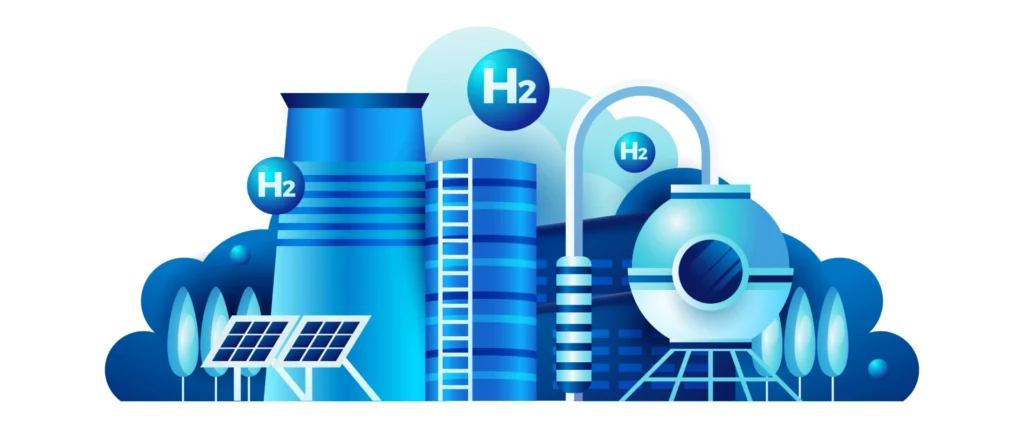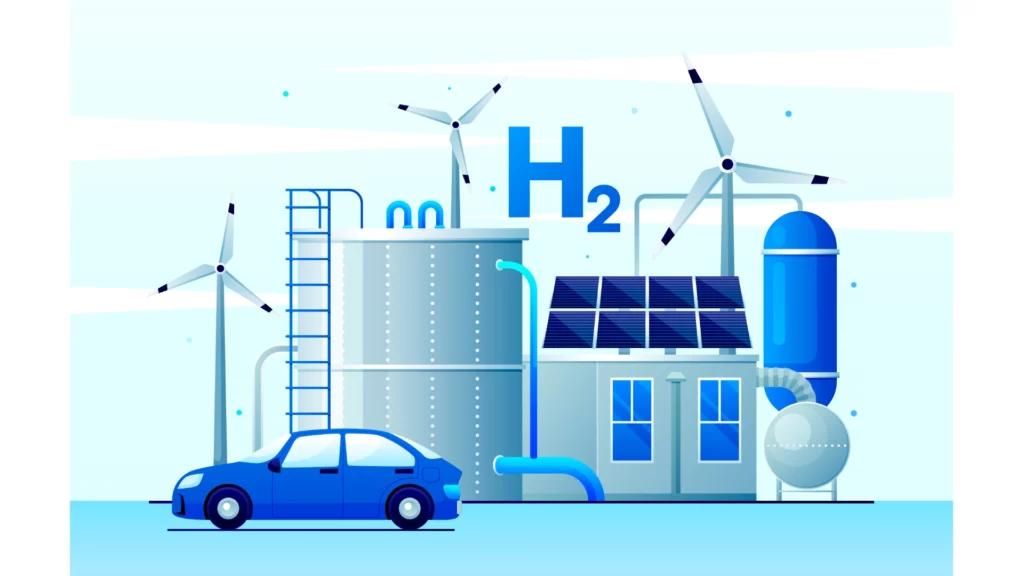Green Hydrogen Systems
Green hydrogen represents a transformative leap toward sustainable energy solutions, grappling with the dual challenges of climate change and energy security.
Despite its nascent stage, the discourse around green hydrogen is vibrant, driven by its potential to decarbonize industries notoriously difficult to abate.
However, the path to its widespread adoption is fraught with economic and technological hurdles.
In this article, we delve deeper into green hydrogen, elucidating its production, applications, and the pivotal role it could play in our sustainable future.

Understanding Green Hydrogen
At its core, green hydrogen is hydrogen fuel produced using renewable energy sources.
Unlike its gray counterpart, which relies on natural gas, green hydrogen's production emits no carbon, aligning with global carbon reduction goals.
How Green Hydrogen is Produced
- Renewable Energy Source: Solar, wind, or hydroelectric power converts into electricity, marking the first step towards green hydrogen.
- Electrolysis Process: Electricity from renewable sources powers an electrolyzer, splitting water into hydrogen and oxygen.
- Hydrogen Collection and Storage: The hydrogen gas is then compressed or liquified, and stored for future use across various sectors.
The Main Applications of Green Hydrogen
- Transportation: Powers fuel cell electric vehicles (FCEVs), emitting only water vapor.
- Industrial Processes: Serves as a raw material in ammonia production, refining, and metal processing.
- Energy Storage and Power Generation: Acts as a medium to store excess renewable energy, later used for electricity generation.
- Heating and Cooling: Potential use in residential and commercial heating, reducing dependence on fossil fuels.

The Price Barrier and Beyond
Julio Friedmann, a senior research scholar at Columbia University's Center on Global
Energy Policy identifies price as the primary hurdle for green hydrogen. However, the challenges extend beyond cost:
- Technical and Infrastructural Requirements: Transitioning to green hydrogen requires significant advancements in electrolysis efficiency and the development of dedicated hydrogen transport and storage infrastructure.
- Environmental Concerns: While green hydrogen itself is clean, its production is energy-intensive. The ecological footprint of the energy used in electrolysis, especially if not sourced from 100% renewable energy, remains a concern.
The Path to Cost Reduction
The cost of green hydrogen is influenced by several factors, but the key among them is the cost of renewable energy and electrolysis technology.
As these costs decrease, so too will the cost of green hydrogen.
By 2050, experts predict green hydrogen could cost as little as $1/kg, making it competitive with fossil fuels.
Innovations and Advances in Green Hydrogen
Recent technological advancements and policy support have positioned green hydrogen on the cusp of a breakthrough:
- Advances in Electrolysis Technology: New electrolyzer designs promise higher efficiency and lower operational costs.
- Renewable Energy Cost Decline: The cost of solar and wind energy has plummeted, reducing the overall cost of producing green hydrogen.
- Policy and Financial Incentives: Governments worldwide are implementing policies and subsidies to support green hydrogen projects.

The Environmental Case for Green Hydrogen
Green hydrogen stands to offer profound environmental benefits, primarily through the reduction of carbon emissions in sectors hard to electrify.
Its adoption can significantly contribute to global efforts to mitigate climate change.
Key Environmental Benefits
- Carbon Emission Reduction: By replacing fossil fuels, green hydrogen reduces the carbon footprint of industrial processes and transportation.
- Improved Air Quality: Green hydrogen vehicles emit no pollutants, offering a cleaner alternative to fossil fuel-powered transportation.
- Energy Security and Independence: By diversifying energy sources, green hydrogen reduces reliance on imported fuels, enhancing national energy security.
Challenges and the Road Ahead
Despite its potential, the path to widespread adoption of green hydrogen is not without challenges.
High production costs, the need for substantial infrastructural investment, and the current limited scale of production are significant barriers.
However, with strategic investments and continued technological advancements, green hydrogen can play a pivotal role in the transition to a sustainable energy future.
Future Outlook
- Scaling Up Production: Expanding green hydrogen production facilities will be crucial to lowering costs and increasing availability.
- Infrastructure Development: Building pipelines and storage facilities specifically designed for hydrogen will address distribution challenges.
- Policy Support: Government policies will need to continue supporting the growth of the green hydrogen sector through incentives and regulations that encourage its adoption.
Conclusion
Green hydrogen offers a promising path forward in the quest for sustainable energy solutions.
While challenges remain, the potential benefits—ranging from reduced carbon emissions to improved air quality and energy independence—are too significant to ignore.
Through continued innovation, investment, and international collaboration, green hydrogen can become a cornerstone of our future energy system, powering everything from vehicles to industries with clean, renewable energy.
As we stand on the brink of this green revolution, it's clear that green hydrogen is more than just an energy source; it's a beacon of hope for a sustainable, decarbonized future.
Source:
System development and assessment for green hydrogen generation and blending with natural gas

